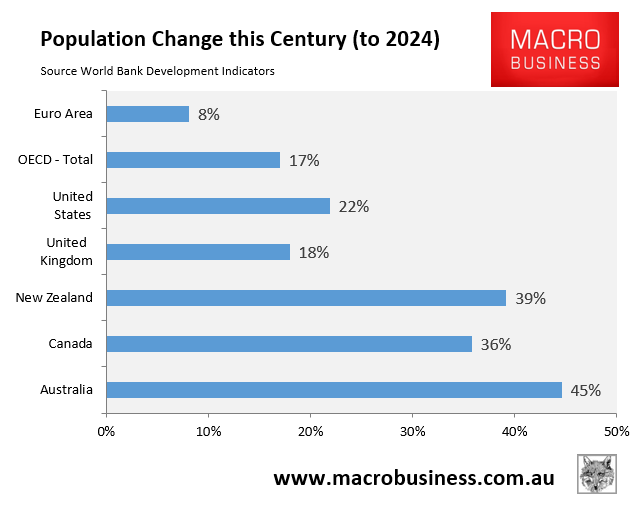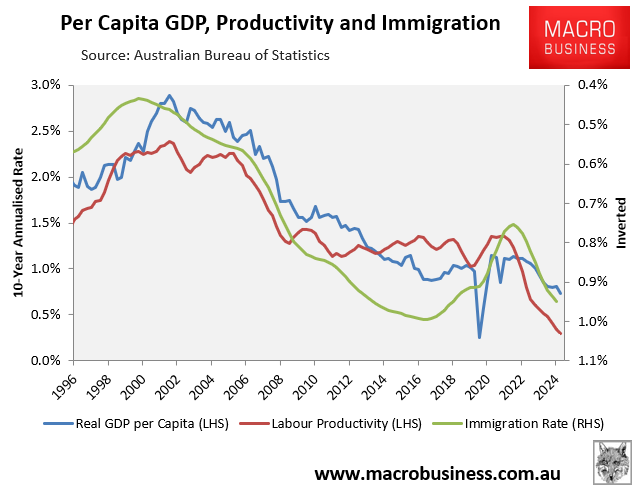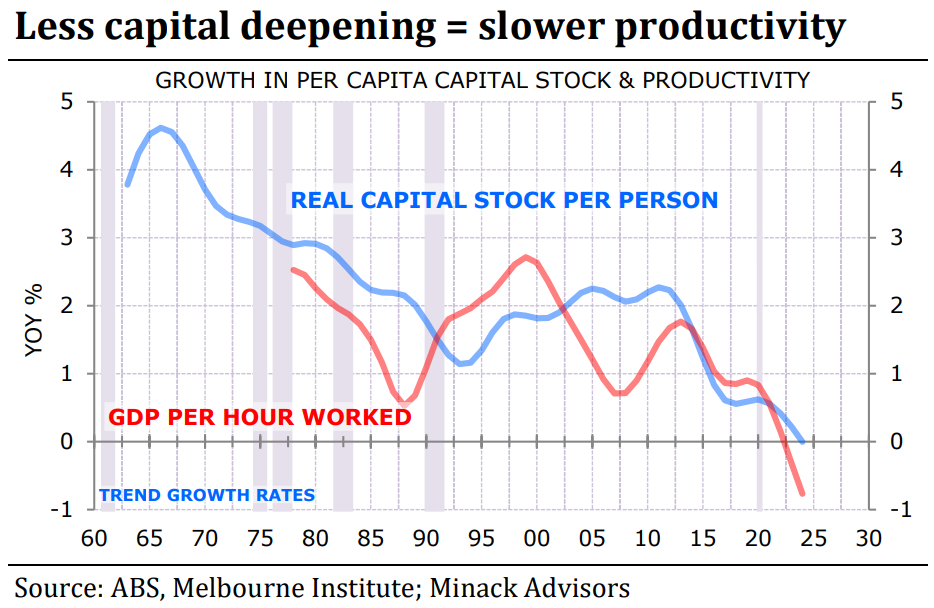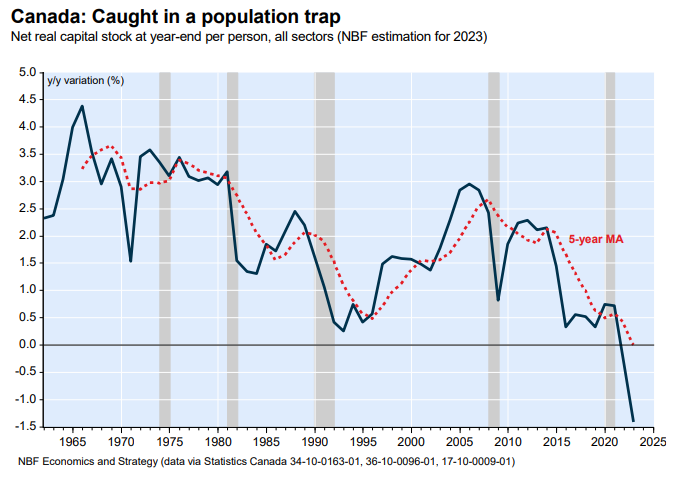Earlier this week, Alan Kohler penned an article at the ABC arguing that immigration was the key issue missing from the federal government’s productivity roundtable held last week in Canberra.
Kohler noted that “at least 800,000 more people came to live in Australia over the past four years than Treasury anticipated. That’s more than three extra Hobarts”.
“So, there are that many more cars on the road than expected, that many more people looking for health care, and hundreds of thousands more kids in schools than expected”.
“The failure to match population with housing and infrastructure has led to a more serious decline in living standards than evident from GDP per capita statistics, and it’s the key reason for the generational inequality that was the source of furious agreement around the roundtable that Something Needs To Be Done about it”, Kohler wrote.
Crispin Hull expressed similar sentiments in the Canberra Times.
Hull noted that the productivity roundtable “agreed that housing was the most significant element of inter-generational unfairness”, yet “they completely ignored the biggest contributor to the fact that young Australians are finding it near impossible to buy a dwelling without parents and/or grandparents chipping in—high immigration”:
Since the end of the pandemic, Australia has brought in a net number of more than 1.5 million people. In 2022-23 it was a record 536,000. Whatever the planning rules, building regulations, red tape or green tape, or tax system, the task of housing all those people was always going to be impossible.
And it will continue to be impossible if we continue the madness of bringing so many people into the country – stressing not only housing, but infrastructure generally and the environment generally.
It is elementary economics that if you increase demand, you create scarcity, and you drive up prices. The roundtablers would have learnt that in Economics 101, yet they studiously ignored it.
Worse, they did not make the obvious connection between high immigration and low productivity.
Australia’s productivity slump has almost exactly coincided with the ramping up of immigration since the mid to late 1990s.
Businesses are simply not going to invest in innovation and technology while ever it is easier to import more cheap labour. Again Economics 101 tells us that if business faces labour scarcity, the price of labour (wages) goes up. And when wages go up businesses have to invest in capital that makes that labour more productive.
For too long policy in Australia has been more directed at making labour cheap and compliant rather than productive and rewarding…
A key reason for the decline in Australia’s productivity and living standards is that the country has grown rapidly through mass immigration.
World Bank data presented below shows that Australia’s population increased by 45% (circa 8.5 million) in the first 25 years of this century, the strongest growth in the advanced world.

Australia failed to provide the extra workers with extra tools, machinery, and technology; extra homes for the millions of extra families; and extra infrastructure (roads, rail, schools, hospitals, water supplies, energy, etc.).

As a consequence, Australians’ standard of life has decreased. ‘Capital shallowing’ harmed Australia’s productivity by reducing the quantity of capital investment per person.

Canada experienced a similar situation, with massive immigration outpacing private investment.

Australia has also diluted its vast mineral wealth and exports (which we do not adequately tax) among a larger population, making residents poorer per capita.
Sadly, there is blanket censorship within federal agencies on migration, given that the RBA, the Productivity Commission, the Productivity Roundtable, and everyone else within government refuses to acknowledge that the ‘Big Australia’ mass immigration policy has been destructive for productivity and living standards.
Given that Australia’s population is officially projected to grow by another 13.5 million over the next 40 years—equivalent to another Sydney, Melbourne, and Brisbane—the dilution of the nation’s capital base, productivity, and living standards will continue.

Source: Centre for Population
Australia’s excessively high, poorly targeted, and low-skilled migration system is crush-loading the nation’s capital base and living standards. Yet, it wasn’t even discussed at last week’s productivity roundtable in Canberra.

